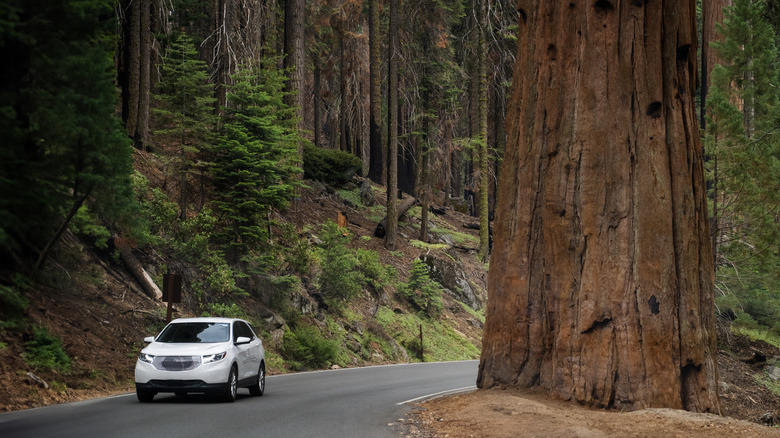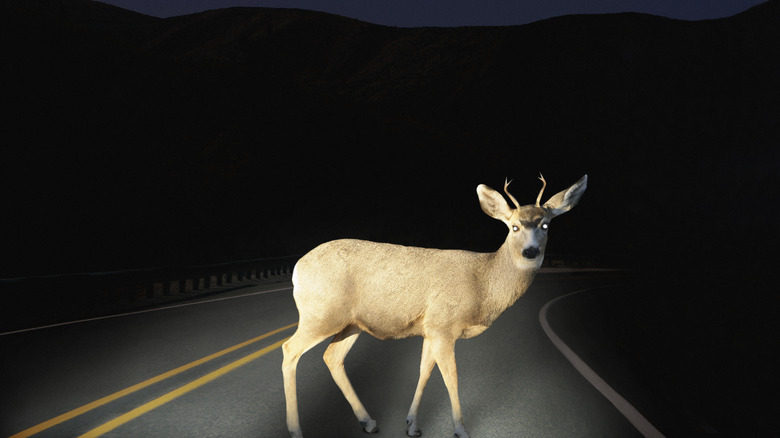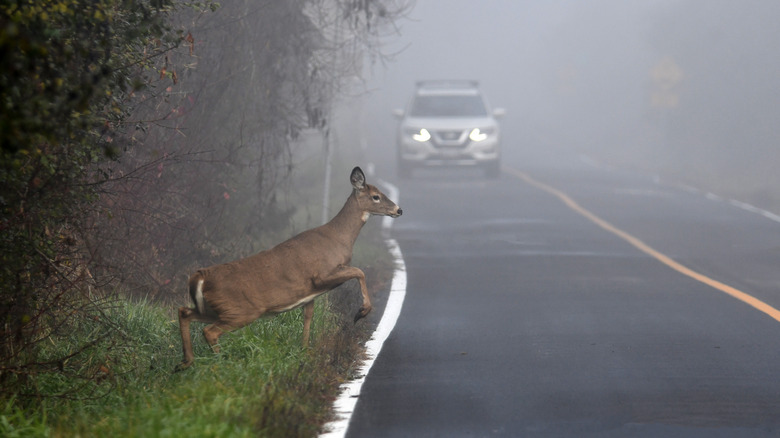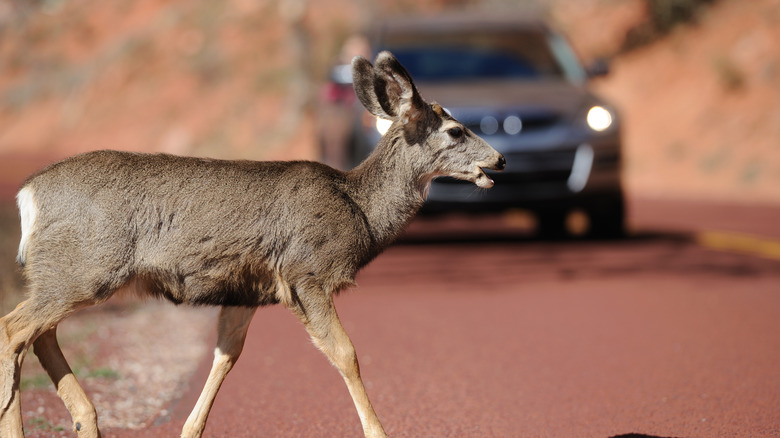The Animal Responsible For The Most US Deaths May Surprise You
When thinking of the most dangerous animals in the United States, many images come to mind. You might think of the various types of bears roaming about in national parks. If you're a Floridian, you may be wary of alligators or crocodiles lurking in nearby waters. Even stinging insects like bees, hornets, and wasps, which cause hundreds of deaths annually due to allergies, might come to mind. But when it comes to the animal responsible for the highest number of deaths in the U.S., the answer is surprising: deer.
Deer are typically viewed as gentle, graceful creatures, commonly seen grazing in fields or darting through forests. But these animals are responsible for 59,000 human injuries and 440 human deaths on average each year, per a 2019 study in Human–Wildlife Interactions. These numbers surpass fatalities caused by more traditionally feared animals such as spiders and snakes. Indeed, the danger deer pose is not as innocent as their appearance suggests.
Deer danger on the roads
The primary reason deer are so deadly has nothing to do with their behavior. In fact, they only become aggressive under certain circumstances. As long as you're calm and respectful, you typically don't need to worry if you end up too close to a deer in person. On the road, however, is quite a different story.
The threat comes from deer's tendency to wander onto roads and highways and collide with vehicles. These accidents are a significant hazard, especially in rural areas where their populations are high and roads often cut into their natural habitats. According to a 2008 report from the U.S. Department of Transportation's Federal Highway Administration, there are approximately 2.1 million deer-vehicle collisions annually in the United States, causing over $10 billion in economic losses. These accidents are especially hazardous when drivers swerve to avoid hitting a deer, often leading to loss of vehicular control and potentially leading to catastrophic outcomes for those in nearby cars as well.
Why deer-vehicle collisions are so common
Deer-vehicle collisions (DVCs) are most frequent during dawn and dusk, the times of day when the animals are most active and visibility is low. The problem is exacerbated by the fact that deer often travel in groups — if one crosses the road, others are likely to follow, increasing the chances of a crash. This is particularly true in the fall during the deer mating season, when these animals are more active and less cautious. The risk for colliding with deer during the mating period is heightened further by the fact that this time of year coincides with a peak travel period, as people venture to popular camping spots to enjoy the fall foliage.
Additionally, as suburban and rural areas expand, human development encroaches on deer habitats, leading to more frequent encounters between vehicles and the animals. The result is an increasing number of accidents, particularly in states with large deer populations. According to the Insurance Information Institute, West Virginia, Montana, and Pennsylvania had the highest likelihood of such collisions between July 2022 and June 2023.
Preventing deer-related accidents
There are steps drivers can take to minimize the risk of a DVC. First and foremost, always be vigilant when driving through areas known for high deer activity, especially at dawn or dusk. When driving at night, use your high beams to increase visibility and spot deer on the side of the road. Of course, use these lights cautiously to avoid impairing the visibility of oncoming traffic.
Though you may be in a rush to reach your destination, prioritize your safety and slow down. Reduce your speed in areas where deer are common and where signs of crossings are posted. This gives you more time to react if the animal suddenly appears.
If you do spot a deer or one runs onto the road, brake, don't swerve. Brake firmly and stay in your lane to avoid causing more severe accidents with other drivers. Finally, if you see one deer and avoid a collision with it, do not immediately drive off. Others are likely to follow, so be prepared. With these precautions in mind, you can reduce your chances of a dangerous encounter with these otherwise gentle creatures.



